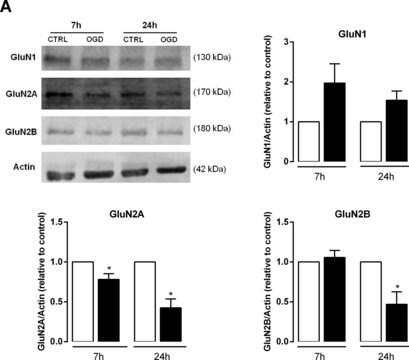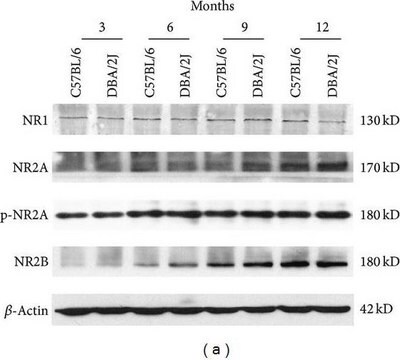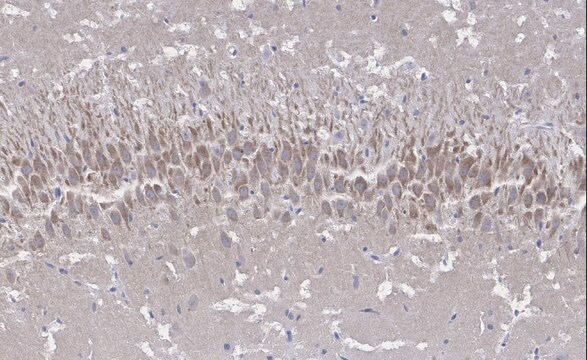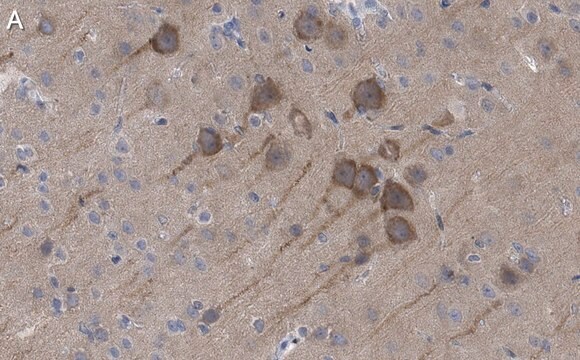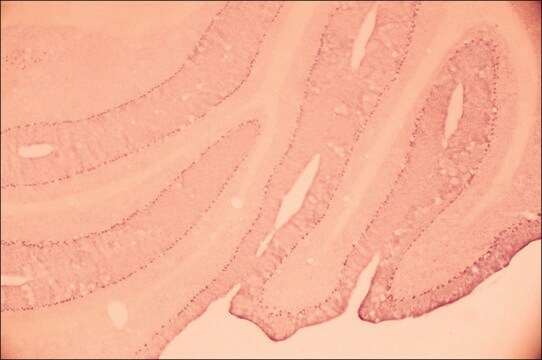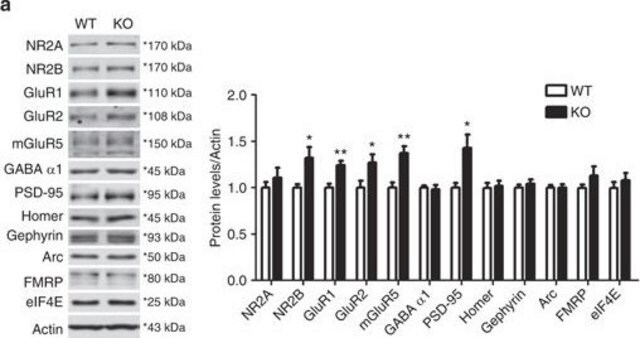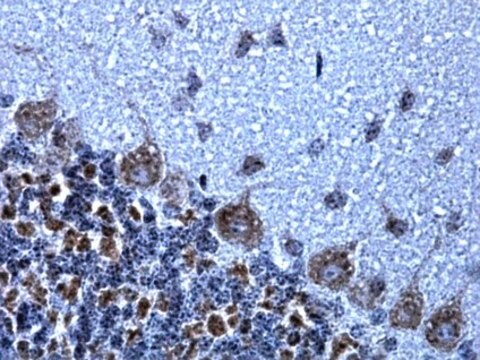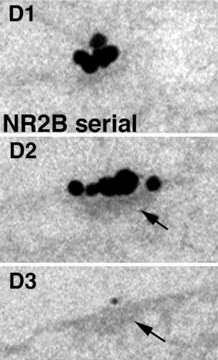AB1557P
Anti-NMDAR2B Antibody
Chemicon®, from rabbit
Synonyme(s) :
N-methyl D-aspartate receptor subtype 2B, N-methyl-D-aspartate receptor subunit 2B, N-methyl-D-aspartate receptor subunit 3, glutamate receptor subunit epsilon-2, glutamate receptor. ionotropic, N-methyl D-aspartate 2B, Glutamate
About This Item
Produits recommandés
Source biologique
rabbit
Niveau de qualité
Forme d'anticorps
affinity isolated antibody
Type de produit anticorps
primary antibodies
Clone
polyclonal
Espèces réactives
mouse, rat, human
Fabricant/nom de marque
Chemicon®
Technique(s)
immunohistochemistry: suitable
immunoprecipitation (IP): suitable
western blot: suitable
Numéro d'accès NCBI
Numéro d'accès UniProt
Conditions d'expédition
dry ice
Modification post-traductionnelle de la cible
unmodified
Description générale
Properties of NMDAR include modulation by glycine, inhibition by Zn2+, voltage dependent Mg2+ blockade and high Ca2+ permeability. The involvement of NMDAR in the CNS has become a focus area for neurodegenerative diseases such as Alzheimer′s disease and also epilepsy and ischemic neuronal cell death.
Spécificité
Immunogène
Application
1:1,000-1:2,000 dilution of a previous lot was used on immunohistochemistry.
Immunoprecipitation:
3 μL of a previous lot of this antibody (under appropriate conditions) quantitatively immunoprecipitated all NMDAR2B in 200 μg of rat brain.
Western Blot Analysis:
1:100-1:2,000 dilution of a previous lot (NMDAR2B is present in high concentrations in the hippocampus).
Optimal working dilutions must be determined by the end user.
Neuroscience
Neurotransmitters & Receptors
Description de la cible
Forme physique
Stockage et stabilité
Remarque sur l'analyse
Brain tissue, Rat Purkinje cell dendrites, rat hippocampus lysate, HEK 293 cells expressing NR2B.
Autres remarques
Informations légales
Clause de non-responsabilité
Vous ne trouvez pas le bon produit ?
Essayez notre Outil de sélection de produits.
En option
Code de la classe de stockage
11 - Combustible Solids
Classe de danger pour l'eau (WGK)
WGK 1
Certificats d'analyse (COA)
Recherchez un Certificats d'analyse (COA) en saisissant le numéro de lot du produit. Les numéros de lot figurent sur l'étiquette du produit après les mots "Lot" ou "Batch".
Déjà en possession de ce produit ?
Retrouvez la documentation relative aux produits que vous avez récemment achetés dans la Bibliothèque de documents.
Notre équipe de scientifiques dispose d'une expérience dans tous les secteurs de la recherche, notamment en sciences de la vie, science des matériaux, synthèse chimique, chromatographie, analyse et dans de nombreux autres domaines..
Contacter notre Service technique